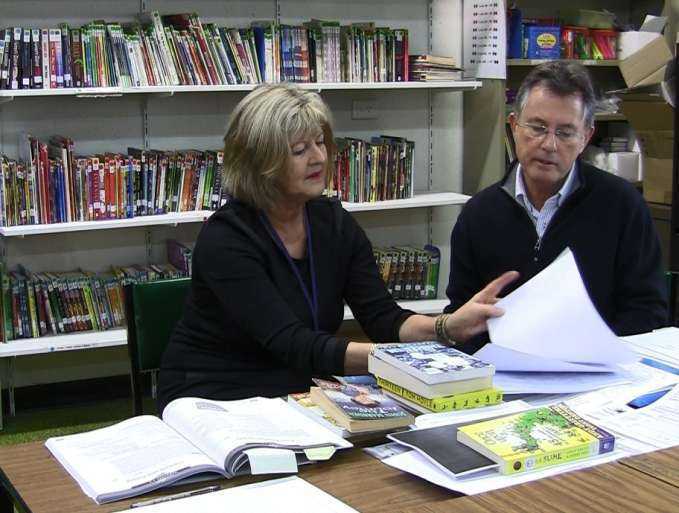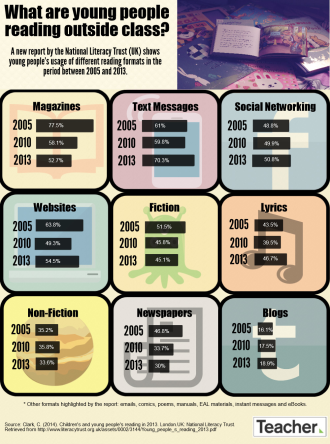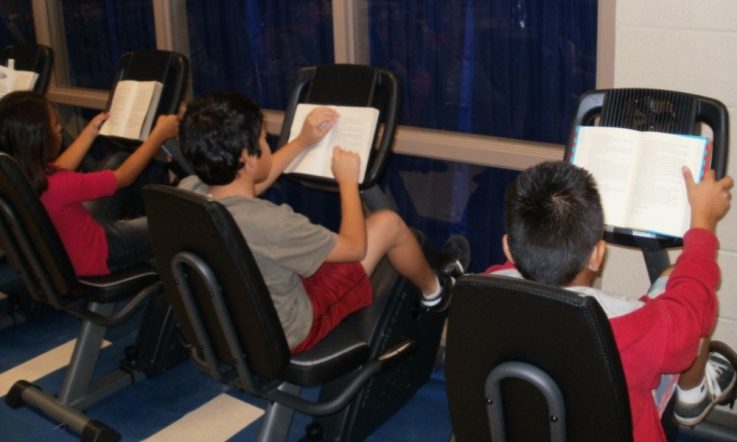With almost two-thirds of its Year 7 to 11 students reading at a primary level, Sunshine College decided to implement a whole-school intervention involving all staff - not just the literacy teachers.
The SunLit reading program sees all students at the government secondary school in Melbourne take part in four 50 minute lessons each week.
The school had previously operated targeted reading sessions – withdrawing students from their ‘regular’ lessons to give them additional support.
Jodie Parsons, who is responsible for Curriculum Design and Development, says for Sunshine College that approach had its drawbacks. ‘[For us], it wasn’t sustainable,’ she tells Teacher. ‘You can't just keep taking kids out of class, because what class do you take them out of?
‘They need to be in English, so you don't take them out of that, then you end up taking them out of Maths, Music or something they might actually be successful at, or really enjoy. And so they end up doing twice as much English as everybody else, which just disengages them further.
‘Also, the difference with the [whole-school] program is that it meant all teachers were then given PD on how to use these literacy strategies in their classroom - a withdrawal program doesn't do that. It just maintains that excellence within those few teachers that teach [the subject].’
The SunLit program is based on the work and research of Queensland academic Dr Carol Christensen and is designed to cater to students of all abilities, including those who are reading above the level expected for their age.
Students are vertically streamed and taught in one of four strands: Decoding (for those reading at Prep to Year 2 level); Comprehension transition (Year 3/4); Comprehension (Year 5/6); and Strategies (secondary). Reciprocal teaching runs through each strand.
The program has been running since 2007 and has attracted interest from schools across the country. Indeed, Sunshine College was one of the ‘turnaround schools’ highlighted in a recent Grattan Institute report for its progress in the areas of literacy and numeracy.
‘When the principal, Tim Blunt, was appointed to Sunshine eight years ago, literacy results had hit rock bottom. It made his job a daunting assignment but it also created a mandate for change,’ report author Dr Ben Jensen notes.
College Literacy Leader Janis Copping recalls how a group of staff, not just English teachers, visited Queensland in 2005/6 to see how Christensen’s approach was working. They were impressed, but were ‘completely overloaded’ and returned to Victoria wondering how it would work in their own school.
The leadership team resisted the temptation to launch straight in. Test analysis revealed 63 per cent of students from Year 7 to 11 were reading at a primary school level.
So, the school spent one year giving staff focused professional development that would help them deliver the program – including how to teach some students basic skills such as decoding, and how to continue to push the high achievers to the next level.
‘Some of the kids in Year 7 and 8, when they come into the college, might already be reading at a Grade 10 or 11 level, so they're already exceeding where they need to be. We still are able to offer options ... it's accelerating all students, so making up for lost time and also pushing students further,’ Parsons says.
The majority of resources used in SunLit have been developed by the school, which has been a huge task. Two people are employed to develop the lessons and accompanying materials.
Every class gets a folder containing two weeks’ worth of work – all prepared for the teacher, including the structure of the lesson. ‘That consistency is important and it is research-based,’ Parsons explains.
‘All of that is based on the skills that Carole [Christensen] has said must go into the program,’ Copping adds. ‘So, she has talked about reciprocal teaching being part of every strand, from comprehension, transition, through to strategies. Therefore, the timetable is set and the lessons have to be developed.’
The additional focus on SunLit also involved major changes to the timetable. The reading program is not a ‘quick fix’. Visiting educators who want to see a 15 minute intervention for selected students will be disappointed.
With SunLit, the whole timetable had to be reshuffled. Time was taken from different subject areas to make the program happen and it’s also the responsibility of all teachers to incorporate the strategies into their own subject areas.
‘I know in my Science class that it made a world of difference,’ Parsons says. ‘I just stopped straight away what I was doing - which was getting slabs of texts and getting kids to read it.
‘[Now] we break up the text, or we use a reciprocal teaching strategy, [or] some comprehension teaching strategies that we've learnt. We define terms, whereas previously I wouldn't have done that, I would just have assumed that everybody in this class could read [the article I was using].
‘I might read portions aloud, get the kids to predict, try and restore meaning to the text before getting them to answer questions. It also changed my questioning technique - in SunLit kids have to do questions ‘on the line’, ‘beyond the line’. They have to make inferences and that type of thing. I hadn't thought of doing that, I'd always just thought of doing basic level questions ...’
Students are assessed regularly to ensure they are in the strand that best meets their individual needs. ‘We could sit down with any parent and say "This is where your child is at and this is the strategy that we can take over one or two years to improve your child's reading" ... and confidently say "These are the skills that we're going to concentrate on for this year, and then next year, if they make progress, these are the skills" ... and be quite descriptive. That's for all students,' Parsons says.
With an effective reading program in place, the next step is writing. ‘There's not a lot of writing in the SunLit program,’ Head of Junior English, Chris Wheat, says. ‘Our NAPLAN results have jumped but not VCE and the reason is probably kids don't automatically improve writing just because they improve reading. So, we're going to have to run a writing program. We don't want to lose SunLit reading time to writing, so this is a hard thing to do.’
Has your school implemented a specialised reading program?
What literacy and numeracy intervention strategies do you have in place?
How are you monitoring the effectiveness of those strategies?



